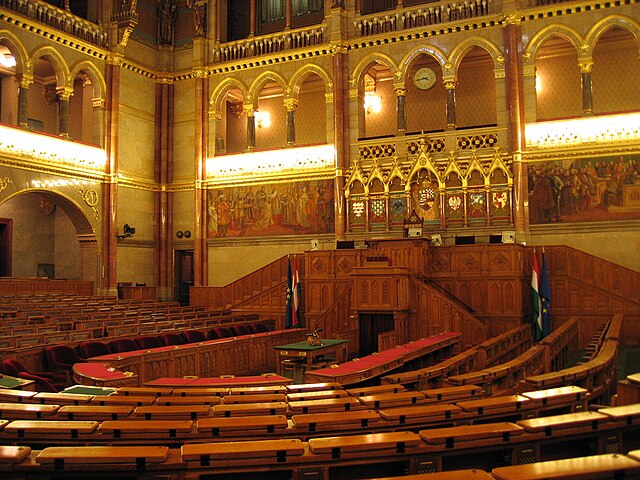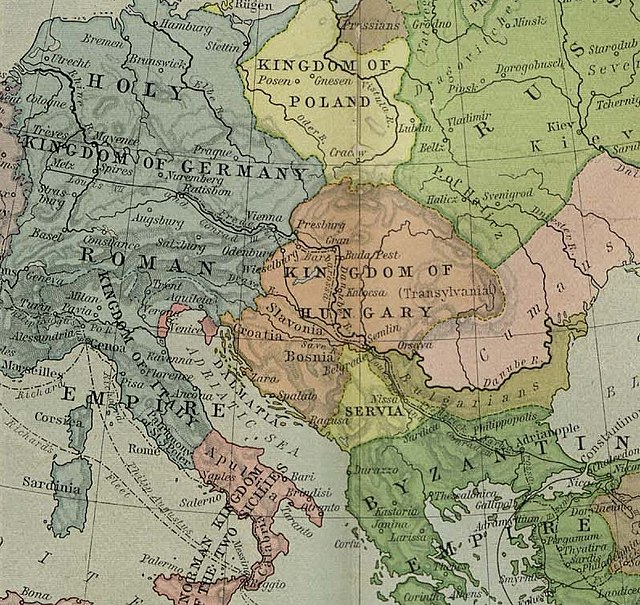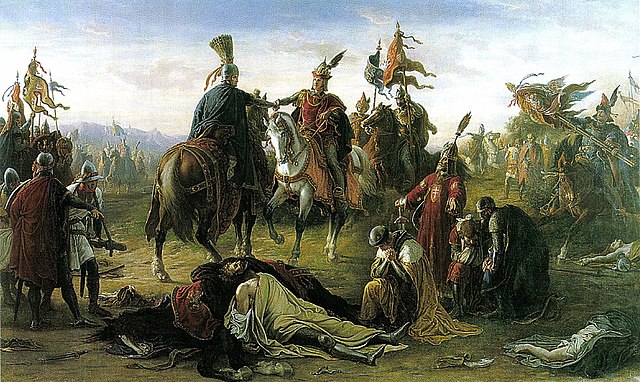The Diet of Hungary or originally: Parlamentum Publicum / Parlamentum Generale was the most important political assembly in Hungary since the 12th century, which emerged to the position of the supreme legislative institution in the Kingdom of Hungary from the 1290s, and in its successor states, Royal Hungary and the Habsburg kingdom of Hungary throughout the early modern period until the end of World War II. It was mainly held in big cities, traditionally in Pozsony, one of the most important Hungarian cities. The name of the legislative body was originally "Parlamentum" during the Middle Ages, the "Diet" expression gained mostly in the early modern period. It convened at regular intervals with interruptions from the 12th century to 1918, and again until 1946.
Diet of Hungary of 1830
Since 1902 the diet has been assembling in the Hungarian Parliament Building in Budapest
Assembly hall of the House of Magnates
Assembly hall of the House of Representatives
The Kingdom of Hungary was a monarchy in Central Europe that existed for nearly a millennium, from the Middle Ages into the 20th century. The Principality of Hungary emerged as a Christian kingdom upon the coronation of the first king Stephen I at Esztergom around the year 1000; his family led the monarchy for 300 years. By the 12th century, the kingdom became a European power.
King Stephen I of Hungary
The Holy Crown of Hungary along with other regalia
Hungary (including Croatia) in 1190, during the rule of Béla III
The Meeting of Ladislaus IV and Rudolf I during the Battle on the Marchfeld, painting by Mór Than (1873)







